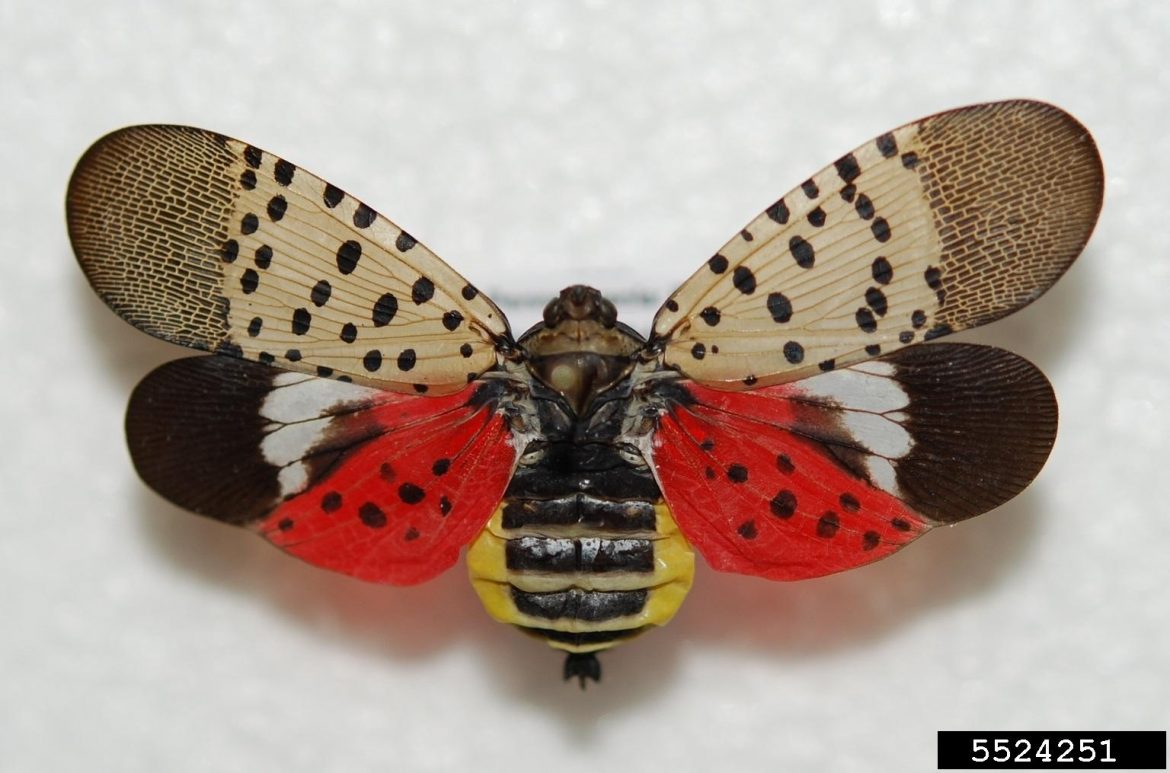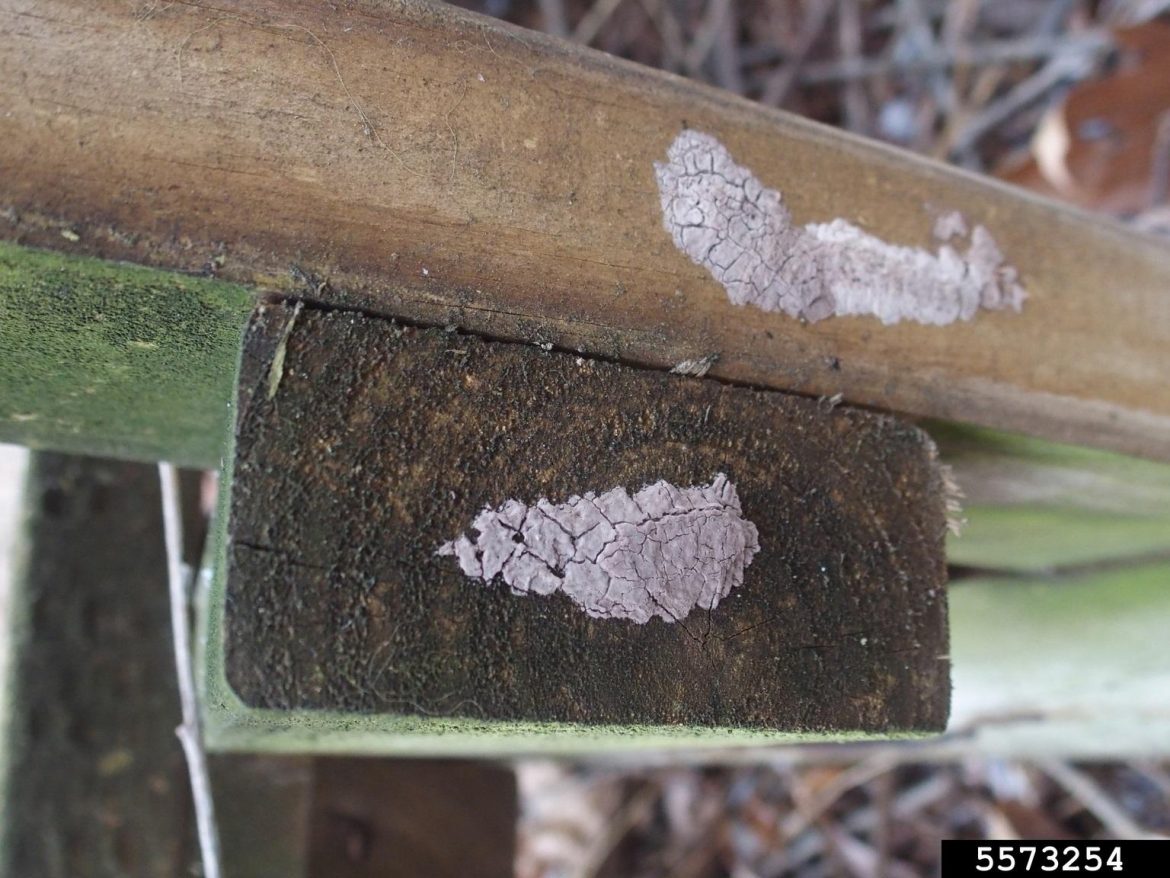
Adult spotted lanternflies are identifiable by their bright body and wing colors. Image: Pennsylvania Department of Agriculture
By Cassidy Hough
A rapidly spreading invasive species may soon be on its way to Michigan.
The Michigan Department of Agriculture and Rural Development (MDARD) is asking Michiganders to keep an eye out for the spotted lanternfly.
“The spotted lanternfly is an insect that has the potential to seriously affect Michigan’s agriculture and natural resources,” said Jennifer Holton, communications director for the MDARD.
The bug is native to Asia but arrived in Pennsylvania in 2014. It can damage or kill more than 70 different types of crops and plants including grapes, apples, hops and hardwood trees.
“It has not been detected in Michigan yet and we certainly don’t want it here,” she said. “But early identification is critical to being able to have containment and eradication of any invasive species.”
The adult insect is about an inch long with brown wings covered in black dots. Opened wings will reveal their black and yellow body and bright red hind wings. Their eggs resemble patches of old chewing gum.
 It was first spotted in Pennsylvania but has since spread to Delaware, Virginia, New Jersey, Maryland and West Virginia.
It was first spotted in Pennsylvania but has since spread to Delaware, Virginia, New Jersey, Maryland and West Virginia.
The spotted lanternfly attacks by sucking sap out of plants and leaving behind a sugar-rich, sticky liquid called honeydew, which results in a black mold that can kill the plant. Honeydew also attracts other pests, such as hornets and ants, which can complicate crop harvests.
The grape industry is in the most danger, according to Michigan fruit and pest expert, Mark Longstroth of MSU Extension. He says Pennsylvania, where the bug was first sighted, the fly has even killed grape vines.
“The grapes are weakened going into the winter and then they don’t survive,” he says.
Although most crops will likely be unharmed by the bug, fruits are in danger, Longstroth explained. He expects the lanternfly to show up in Michigan eventually.

Spotted lanternflies go through several phases, first resembling spotted beetles before morphing into their adult form. Image: Penn State University College of Agricultural Sciences
“Whether or not it will become a pest is another question entirely,” he said. “But it will probably migrate into fruit plantings, especially grapes.”
Spotted lanternflies don’t fly far, but they lay eggs everywhere. The Department of Natural Resources asks travelers to check cars, trailers, firewood and outdoor equipment for signs of the bug before leaving an area.
Any sightings of the spotted lanternfly should be reported to the Michigan Department of Agriculture and Rural Development.
This story was produced by a collaboration of Interlochen Public Radio and Michigan State University’s Knight Center for Environmental Journalism.